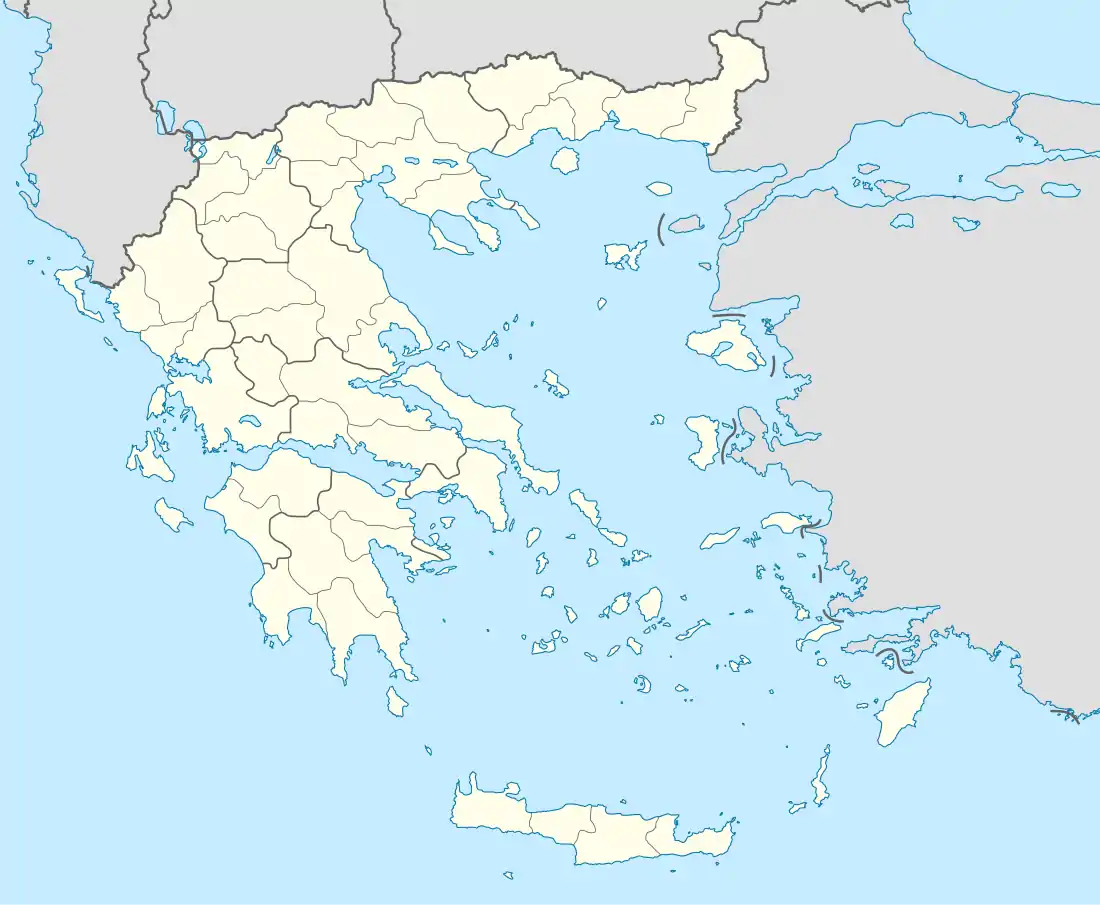Mega Dereio
Mega Dereio (Greek: Μέγα Δέρειο) is a village in the central part of the Evros regional unit in Greece. It is part of the municipal unit of Orfeas within the municipality of Soufli. Together with 6 other villages, it forms the community of Mikro Dereio. It is situated near the upper course of the river Erythropotamos, in the Eastern Rhodope Mountains. In 2011 its population was 528. The Greek National Road 53 (Alexandroupoli – Mikro Dereio – Kyprinos – Ormenio) passes through the village.
Mega Dereio
Μέγα Δέρειο | |
|---|---|
 Mega Dereio | |
| Coordinates: 41°14′N 26°01′E | |
| Country | Greece |
| Administrative region | East Macedonia and Thrace |
| Regional unit | Evros |
| Municipality | Soufli |
| Municipal unit | Orfeas |
| Population (2011)[1] | |
| • Rural | 528 |
| Time zone | UTC+2 (EET) |
| • Summer (DST) | UTC+3 (EEST) |
Population
| Year | Village population |
|---|---|
| 1991 | 561 |
| 2001 | 545 |
| 2011 | 528 |
History
The village was founded by the Ottoman Turks in the 14th century. It was known as Büyük Dervent in Turkish, and Голям Дервент Golyam Dervent in Bulgarian. According to Anastas Razboynikov, in 1830 the village numbered 700 Bulgarian and 50 Turk houses, in 1878 400 Bulgarian and 80 Turks houses and in 1912 420 Bulgarian and 80 Turk houses.[2] According to professor Lyubomir Miletich, the 1912 population had around 300 Bulgarian families and 100 Turk families.[3]
In August 1913 the village was attacked by Turkish troops and irregulars and despite the resistance of the local Bulgarians the bigger part of Golyam Dervent was burned. Many of the villagers were killed, many women were raped. Some residents found shelter in Doganhisar, Dedeagatch or Bulgaria.[4]
After a brief period of Bulgarian rule between 1913 and 1919, it became part of Greece. As a result its Bulgarian and Turkish population was exchanged with Greek refugees, mainly from today's Turkey. 300 Bulgarians moved northward into Burgas, Mokren (4 families), Zagortsi (4 families), Veselie, Mamarčevo, Sokolentsi (2 families) and other villages in Bulgaria.[5] The name of the village was translated into Greek and became Mega Dereio.
External links
References
- "Απογραφή Πληθυσμού - Κατοικιών 2011. ΜΟΝΙΜΟΣ Πληθυσμός" (in Greek). Hellenic Statistical Authority.
- Разбойников, Анастас и Спас Разбойников, Населението на Южна Тракия с оглед на народностните отношения в 1830, 1878, 1912 и 1920 година, София 1999, с. 63, 308
- Любомиръ Милетичъ. „Разорението на тракийскитe българи презъ 1913 година“, Българска Академия на Науките, София, Държавна Печатница, 1918, стр. 173, 299.
- Любомиръ Милетичъ. „Разорението на тракийскитe българи презъ 1913 година“, Българска Академия на Науките, София, Държавна Печатница, 1918, с. 173–177.
- Райчевски, Стоян. Източна Тракия. История, етноси, преселения XV-ХХ век, С. 2002, с. 246, 251–252, 267